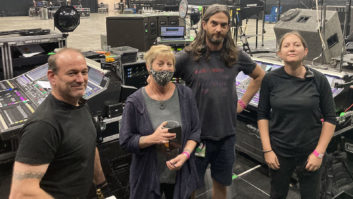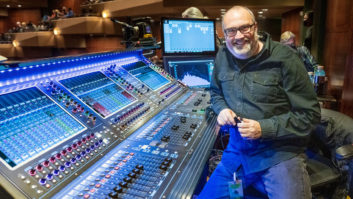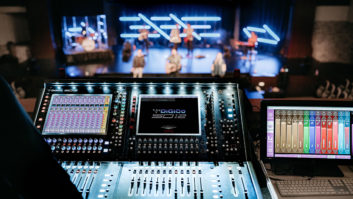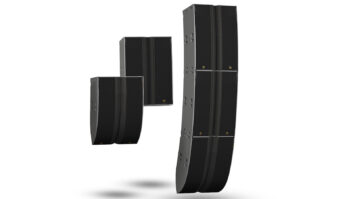Seattle, WA (December 3, 2018)—Pearl Jam recently played two sold-out Safeco Field “Home Shows”—the band’s first hometown concerts in five years—turning them into events to raise money for a variety of King County homeless-related organizations and service providers. Getting other organizations on board to donate around the shows, the group was ultimately able to raise $10.8 million, according to The Seattle Times, which included $868,189 from its own ticket and merch sales.
Rat Sound provided a full complement of L-Acoustics loudspeaker systems for the sold-out shows. The rest of the brief tour included shows at stadiums in Missoula, Chicago, and Boston—including Wrigley Field and Fenway Park.
Adhering to the ‘if it ain’t broke, don’t fix it’ philosophy, Pearl Jam has worked with Rat Sound since 1991, has had FOH engineer Greg Nelson behind the house desk since 2004, has been heard via L-Acoustics PAs since then, and specifically via a K1 system since 2010.

“K1 has a very pleasant, warm sound—even flat with no EQ modifications,” says Nelson, who mixed the shows on a DiGiCo SD5 console equipped with new 32-bit input cards. “I might make a few minor tweaks here and there, but the system makes it very comfortable for me to get the mix I want. L-Acoustics’ LA Network Manager software is part of that. It’s a well laid-out and easy-to-use tool that allows me to put the same sonic characteristics up in the nosebleed seats as we’re getting at front-of-house and down front.”

The standard show setup for the US outdoor stadium shows featured left and right main arrays of 16 K1 with six K2 down-fills flanked by two identical outfill arrays. Low-end punch was delivered by dual hangs of eight KS28 subs in cardioid mode, flown adjacent to the two main arrays, and bolstered by 40 ground-stacked KS28 arranged in ten cardioid stacks of four. Front-fill was achieved by a combination of double- and triple-stacked Kara enclosures positioned atop ground-stacked subs, plus four ARCS II in a horizontal array under each main K1 hang. Stage sidefills were comprised of left and right hangs of four K2, while audience delays consisted of four arrays of 12 K2.
“It was pretty much the same PA system for the whole tour,” Nelson notes. “The only differences were that the side hangs were smaller in Montana to get more vertical dispersion, because it was a football stadium, and there were no delay towers at Wrigley and Fenway—just carts of five or six K2 shooting up under the lower balconies.”
The Soundvision designs for each stadium were a collaborative effort between him and systems engineer Andrew Gilchrest. “I would do a rough design for a standard baseball stadium, including box count, position, sub count and placement, and front-fill coverage,” explains Nelson. “Then Andrew would take that and fine-tune it and do angles and trim for the various buildings. He also came up with the ground sub configuration.”
Pearl Jam • www.pearljam.com
Rat Sound • www.ratsound.com
L-Acoustics • www.l-acoustics.com







